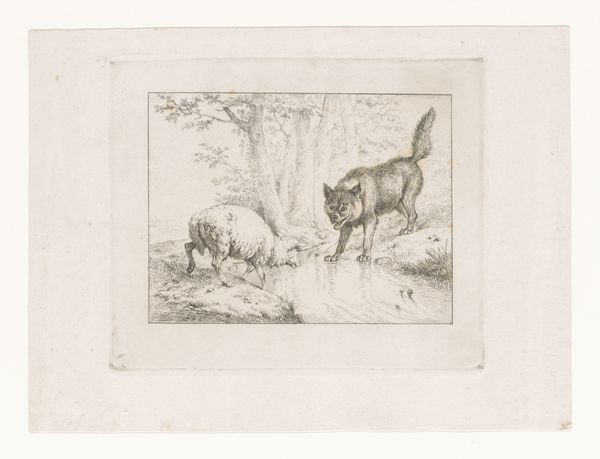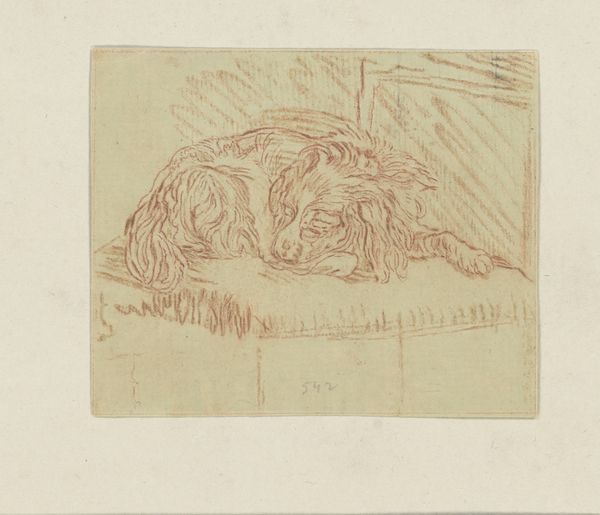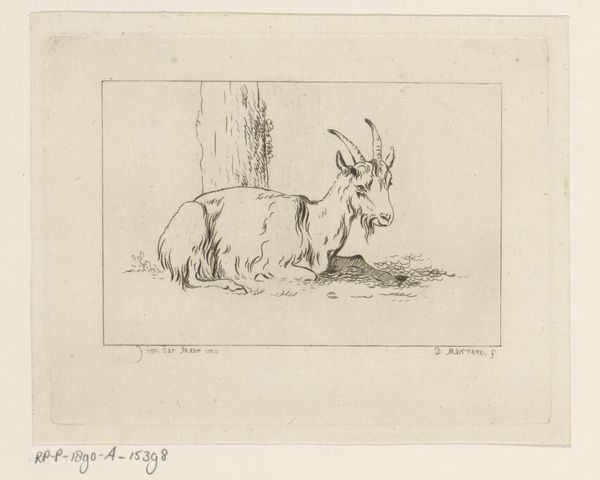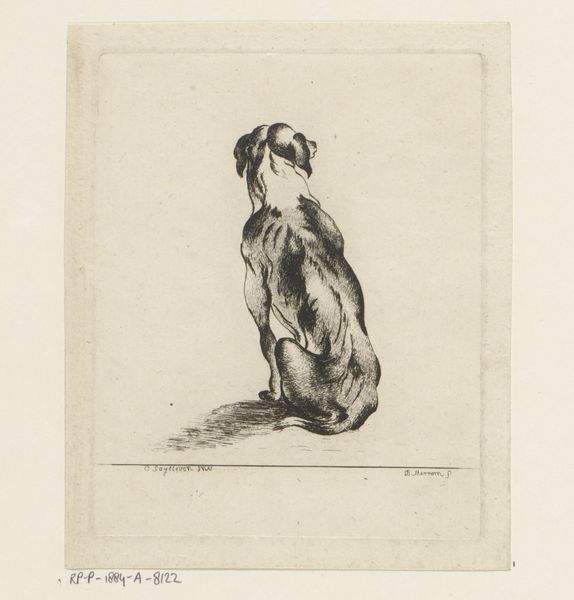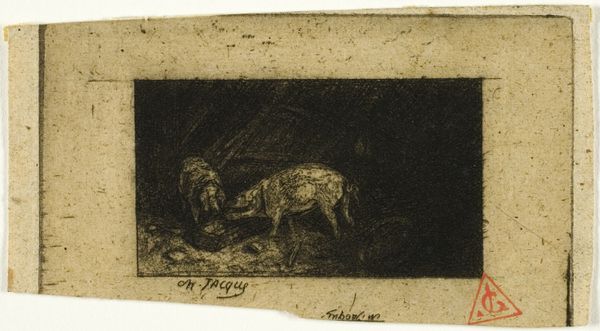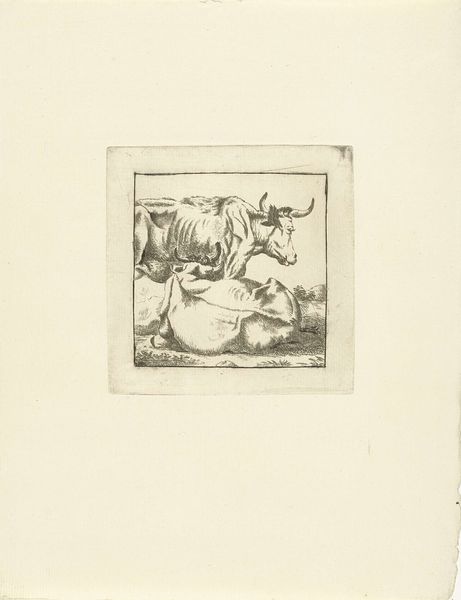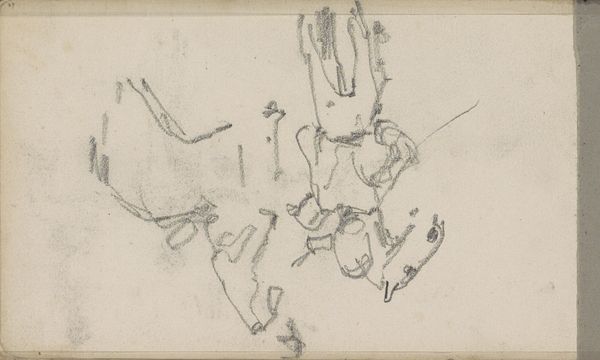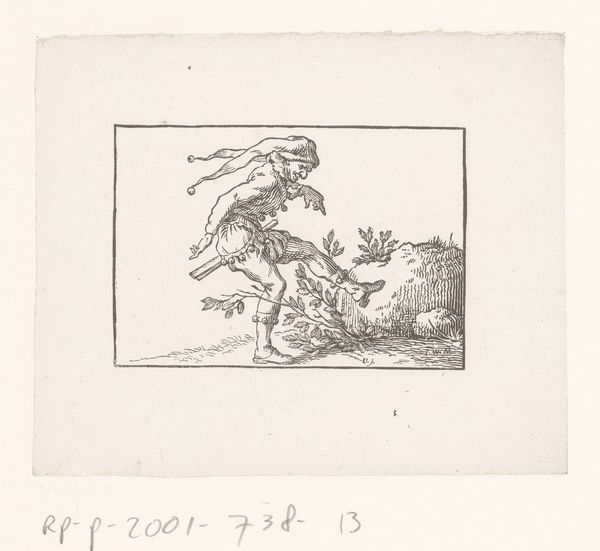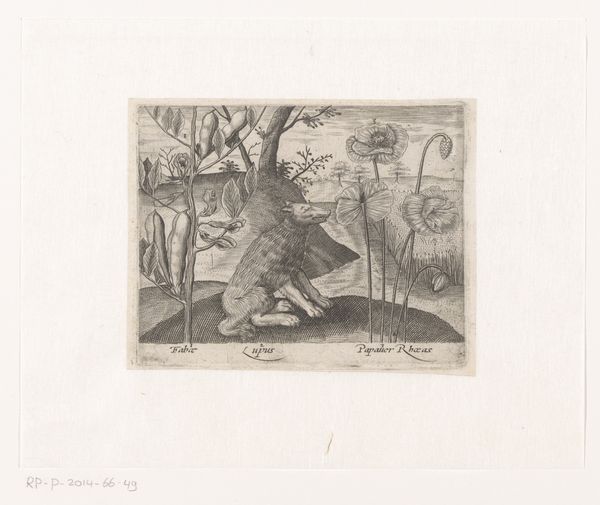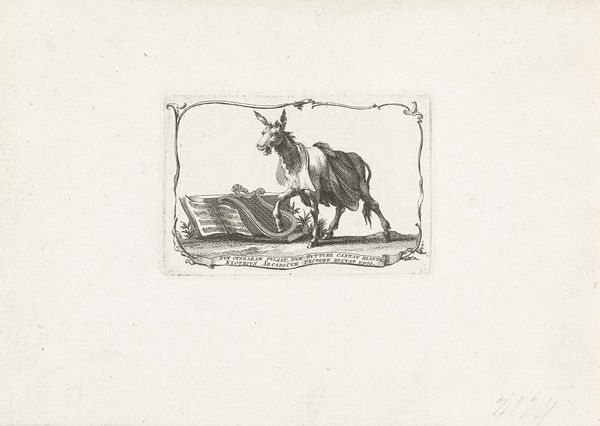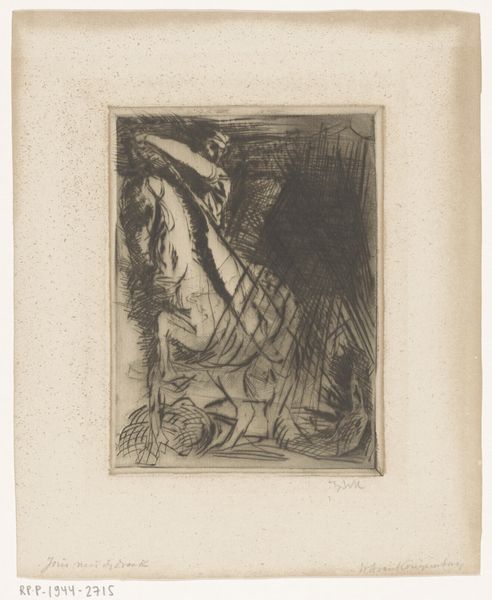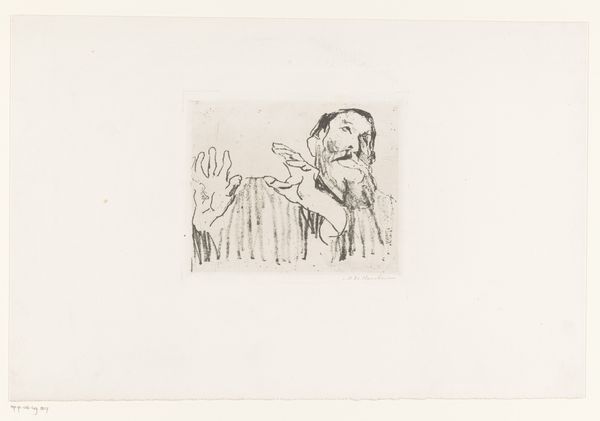
drawing, print, etching, paper, ink
#
drawing
#
narrative-art
#
animal
# print
#
etching
#
old engraving style
#
figuration
#
paper
#
ink
Dimensions: height 83 mm, width 103 mm
Copyright: Rijks Museum: Open Domain
Editor: We're looking at "Konijn achter tralies," or "Rabbit Behind Bars," an etching made by Jacoba Hoijer sometime between 1899 and 1937. The stark black and white contrast immediately makes me think of confinement. What stands out to you? Curator: The first thing I notice is the formal composition. Observe how the bars create a grid, dissecting the visual space. This fragmentation emphasizes the rabbit’s form. It’s confined not just by the physical structure, but by the artist's careful arrangement of line and space. Notice also how the darkness of the cage contrasts with the rabbit's lighter form. It guides our eye and defines the emotional weight of the image. Editor: That's a really interesting way of looking at it! The way the rabbit almost blends into the white space makes it seem like it’s trying to disappear. Curator: Precisely. Consider the interplay between positive and negative space. The rabbit, the positive form, struggles within the dominance of the negative space—the bars, the darkness. This evokes a visual tension, suggesting an inherent conflict between freedom and constraint. What of the marks surrounding the rabbit, do you make anything of that? Editor: They could be flowers or foliage...or almost a frantic scratching from the poor creature trying to get out. Is the intention always clear from formal analysis alone? Curator: Rarely entirely explicit, but by analysing formal elements and internal relationships, the symbolic meaning becomes grounded in the visual construction. It encourages us to delve into subjective interpretations but always with reference to what is manifestly there in the art. Editor: I see. Focusing on the arrangement of form provides an access point to interpreting artwork, giving it a structured meaning to consider more profoundly. Curator: Indeed. By looking closely at the aesthetic choices made, a structured framework to guide the appreciation takes shape, which allows new perspectives on even apparently simple forms.
Comments
No comments
Be the first to comment and join the conversation on the ultimate creative platform.
